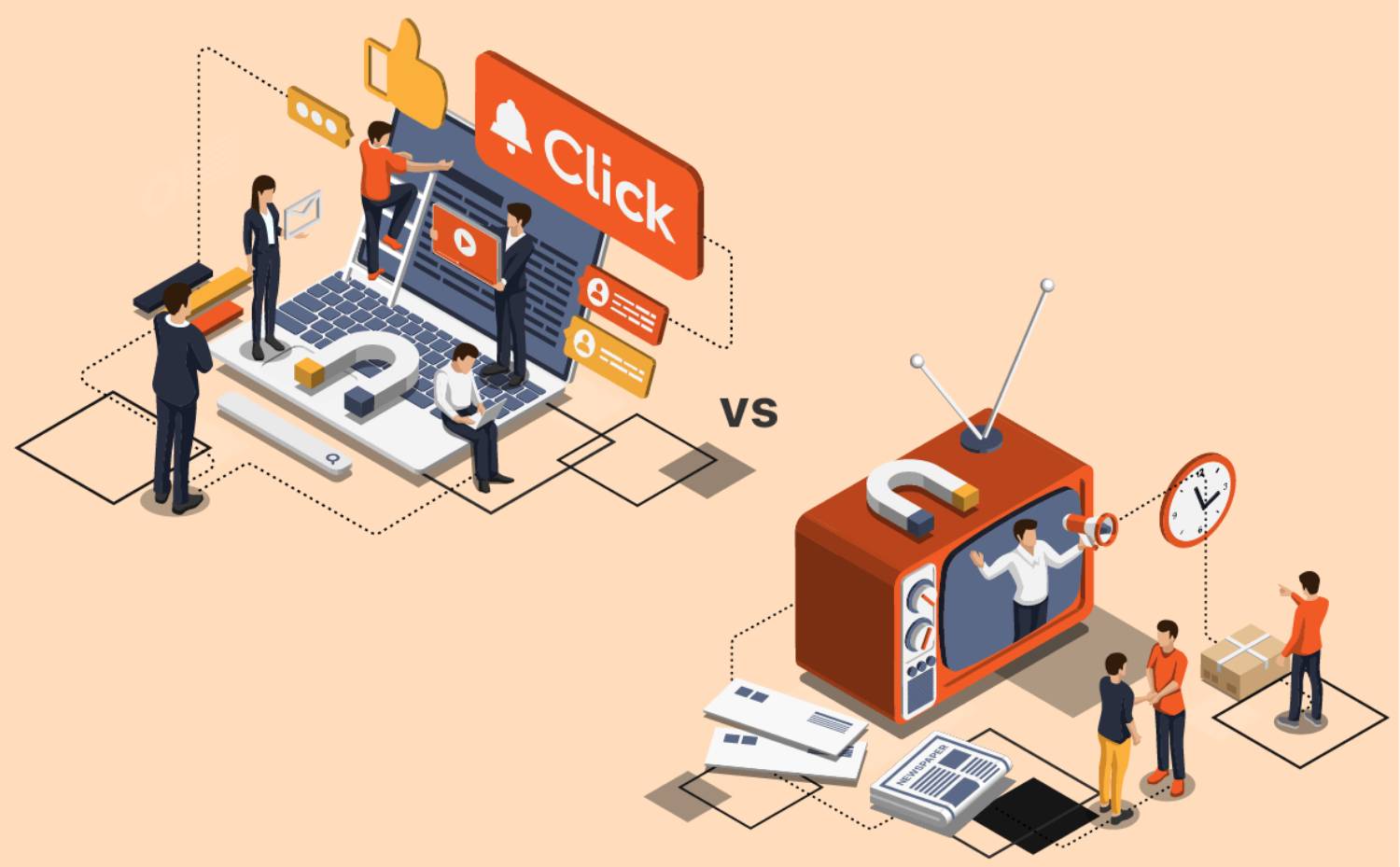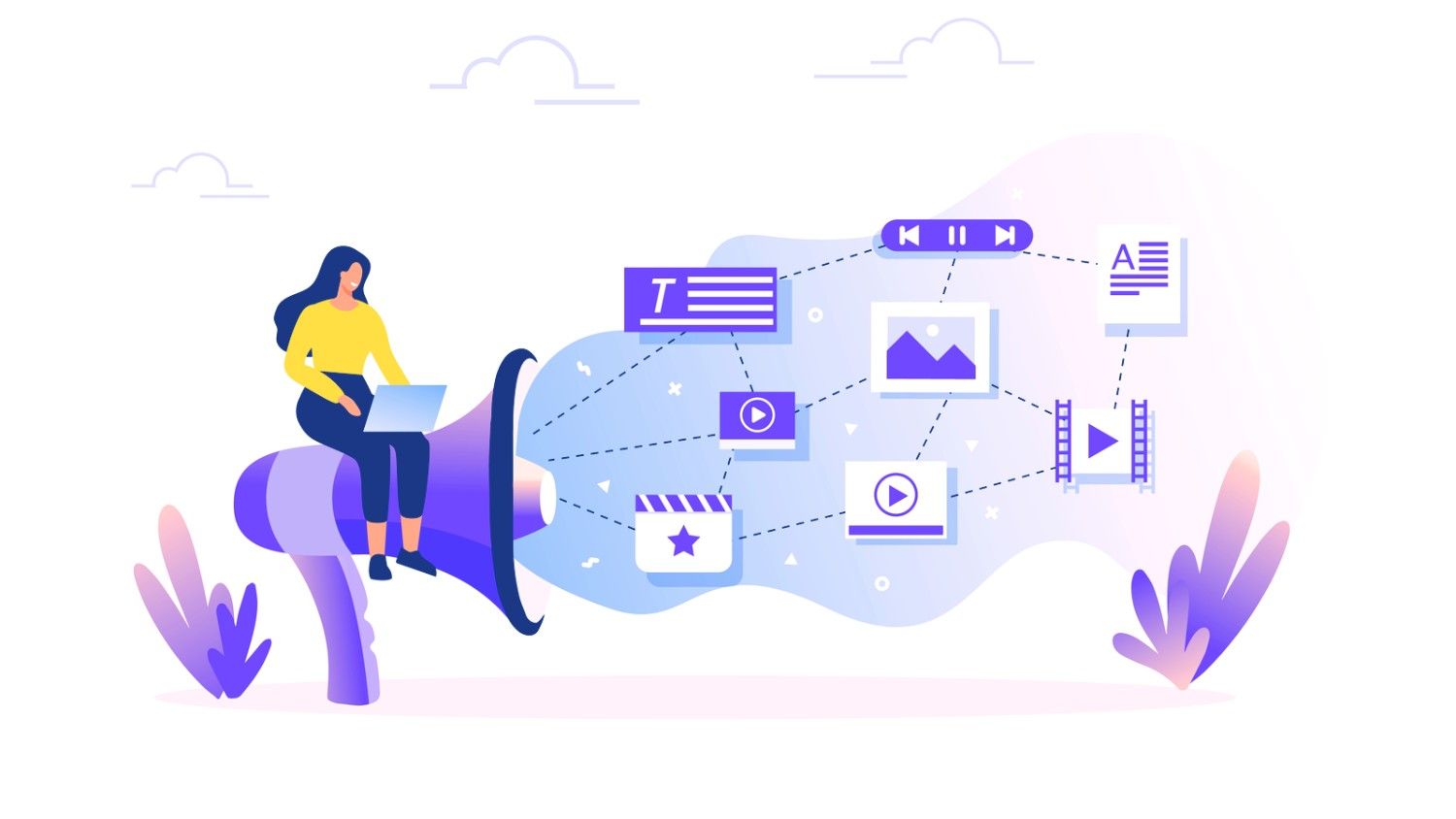Here's why your business needs both traditional and digital marketing
Digital marketing is everywhere, but it's not the only channel you have to boost your marketing efforts. Here are five benefits of combining both to give your business that edge.

While digital marketing has become an essential part of the marketing strategy, there's still a place for direct mail and other forms of traditional marketing.
Traditional marketing is any technique that uses offline media to reach an audience. Basic examples of traditional marketing comprise newspaper and other print ads, but there are also mail ads, billboards, TV, and radio advertisements.
On the other hand, digital marketing refers to using digital channels and technologies to promote products or services. Digital marketing possesses a wide range of strategies, including email marketing, content marketing, and search engine optimization (SEO).
Understanding which marketing strategies are right for your business is crucial to getting the most out of your marketing budget. In some cases, digital marketing alone suffices, especially for smaller businesses, but in many cases, utilizing both channels can optimize your marketing ROI, especially if the business has a brick-and-mortar presence.
According to Business.com, creating a combined digital and traditional marketing strategy creates a mix of push and pull marketing. In simple terms, this strategy involves "pushing" your brand to those who are not actively seeking your product or service, and "pulling" prospects who are looking for your solution.
Here are five ways your business can benefit from the power of combined traditional and digital marketing.
Greater reach

By combining traditional and digital marketing efforts, businesses can reach a wider audience and expand their reach beyond their immediate geographic location through various channels and mediums.
For example, a business might use traditional marketing channels such as print or radio advertising to reach a local audience while using digital marketing channels such as social media or email marketing to gain a broader audience.
Another advantage of combining traditional and digital marketing is that it allows businesses to reach their audience through multiple touchpoints.
For example, a customer might see a print ad for a company, visit the business's website through a search engine, and then receive an email from the company promoting a brand sale or campaign.
This multi-channel approach can strengthen the business's message and increase the likelihood that the customer will take action.
Increased engagement
Combining traditional and digital marketing can also help businesses increase engagement by allowing them to reach a more diverse audience.
Traditional marketing channels like print and television can reach a large audience, but they may need help to reach specific demographics or interests. On the other hand, digital marketing channels like social media, email marketing, and websites can get a broad audience and allow businesses to target specific demographics and interests.
By combining traditional and digital marketing, businesses can create a cohesive brand experience and reach a larger audience, increasing the chances of engaging with potential customers and building customer trust and loyalty.
For example, a television ad can drive traffic to a website or social media page, whereas a well-designed landing page or social media campaign can convert visitors into leads or customers. Businesses can also use a QR code in a print ad that leads to a landing page on their website or use social media to promote an in-store event.

For smaller businesses, events are often an essential part of the marketing and business development strategy. Having a QR code to your website or landing page on printed materials such business cards can be an effective way to help drive potential clients or customers directly to your site or online store as well.
Detailed measurements for marketing campaigns
Digital marketing, in particular, allows for real-time tracking and measurement thru channels like websites, email marketing, and social media with detailed analytics that enable them to track the performance of their marketing efforts in real-time.
This can help companies to make informed decisions about their marketing strategy and allocate resources more effectively. Traditional marketing efforts can also be tracked and analyzed through the use of unique promo codes or coupons, as well as through surveys and other research methods.
For example, businesses can use Google Analytics to track website traffic, conversion rates, and other metrics or use social media analytics tools to track the performance of their social media campaigns.

Moreover, traditional marketing can be paired with digital marketing to track offline conversions. Traditional marketing channels like print and television can be challenging to track in real time, but they can be paired with digital marketing efforts to help track offline conversions.
For example, businesses can include a phone number or unique URL in their traditional marketing materials and then track the number of visits to the website or calls made to the phone number to measure the effectiveness of their marketing efforts.
Save time and get more done through automation
Another benefit of combining traditional marketing and digital marketing is automation.
Digital marketing tools like email marketing and social media platforms offer scheduling tools that allow businesses to schedule their posts in advance. This can save time and effort and enable businesses to maintain a constant presence on social media without manually posting daily.
Furthermore, marketing automation platforms like HubSpot allow businesses to automate various marketing tasks, including lead generation, lead nurturing, and customer segmentation. It helps companies to save time and effort by automating manual tasks.
Enhanced measurement and analysis for budgeting
Combining traditional and digital marketing can enhance measurement and analysis for budgeting in a number of ways.
Unified marketing platform
Firstly, a unified marketing platform such as HubSpot or Zoho allows you to manage both traditional and digital marketing campaigns in one place. Lead generation from offline efforts can be funneled into This makes it easier to track and analyze the performance of your campaigns, as well as allocate budget across different channels.
Integrate data from different sources
By integrating data from different sources, such as social media analytics, email marketing software, and website analytics, you can get a more comprehensive view of your marketing efforts and make more informed budgeting decisions.
Attribution modeling
Attribution modeling allows you to understand the impact of different marketing channels on conversions and revenue. This can help you allocate budget to the channels that are most effective for your business.
Set clear goals and metrics
Setting clear goals and metrics for your marketing campaigns can help you measure the success of your efforts and allocate budget accordingly. For example, you might set goals around increasing website traffic, generating leads, or driving sales.
Use A/B testing
A/B testing allows you to compare the performance of different marketing tactics and allocate budget to the most effective ones. For example, you might compare the effectiveness of different ad copy, landing pages, or email subject lines.
Examples of combined traditional and digital marketing strategies
1. Tracking event attendance through QR code
When you're hosting an event, especially online, using QR codes can help you keep track of who attends. Provide a QR code for people to scan when they join your event. This can be a simple way for them to check in, and you can use it for fun activities like quizzes.
Scanning the QR code can also give you their email addresses, helping you grow your audience. You'll know more about where they're from and their social media details if they choose to share. Plus, after scanning, you can show them useful information like product details, event guides, or even a thank you message with links to catalogs or a feedback form.
2. Offering both online and offline guides, whitepapers, or reports
People appreciate having choices on how they access information. By making your materials like guides, whitepapers, or reports available in both digital and print formats, you give them the freedom to choose how they want to engage with your content.
This approach not only caters to different preferences but also broadens the reach of your valuable insights, making it easier for your audience to interact with your brand in the way that suits them best.
3. Inviting influencers to in-person events
Bringing influencers to your in-person events can significantly boost your brand's visibility on social media. Whether these influencers are well-known celebrities, niche experts, micro-influencers, or even enthusiastic everyday consumers, their presence can generate buzz and potentially increase your social media followers.
This strategy offers a unique opportunity to leverage the influencers' networks, introducing your brand to a wider audience that aligns with your target market.
By engaging with influencers in a real-world setting, you create authentic moments that can be shared online, amplifying your event's reach and impact.
4. Showcasing online customer reviews and testimonials
Highlighting positive customer feedback in your physical spaces, like stores or event venues, can greatly influence potential customers. By displaying reviews and testimonials you've received online, you bridge the gap between digital praise and the physical shopping experience.
This not only reassures new customers about the quality of your products or services but also brings the voice of your satisfied customers into your physical locations.
Showcasing these testimonials can prompt visitors to make a purchase, trusting in the shared experiences of others. It's a powerful way to visually remind customers of your brand's reputation and the positive experiences others have had, encouraging trust and credibility.
5. Boosting your online presence in specific geographic areas with local radio
Using local radio ads to promote your website can increase your online presence and support search engine optimization (SEO) in specific geographic areas.
When you use local radio to send out your message, you are targeting listeners in specific regions. Encouraging these listeners to visit your website leads to targeted traffic, which can have a positive effect on your SEO.
This method allows search engines to recognize your website as relevant to people in those areas, which may improve your search rankings for local queries. Monitoring the increase in website visits and social media activity from these areas after the radio ads are broadcast can help evaluate the effectiveness of this strategy.
As you can see, combining traditional and digital marketing can provide a more comprehensive view of your marketing efforts and help you make more informed budgeting decisions.
However, before implementing new strategies, including a combined approach to traditional and digital marketing, evaluating your current strategy is critical. This evaluation should assess the effectiveness of existing marketing efforts and identify areas for improvement or adjustment.
Understanding your company's position in the market, what sets it apart, and who your target customers are forms the foundation of this assessment.
Essential questions to consider include: Are you adequately informed about your market and customer base to choose the most effective marketing strategies? Or is additional research needed? By thoroughly evaluating your current strategy before trying new approaches, you ensure that your marketing efforts are both strategic and aligned with your business objectives.
This preparation not only supports a seamless customer experience across all channels but also enhances the overall impact of your marketing activities.
Save time and money when producing high-quality bespoke content for your markets. ContentGrow helps marketing teams work with perfectly matched content creators at preferred rates.



